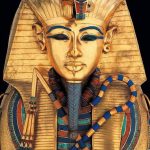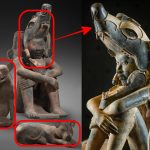Ptahshepses: Insight into Ancient Egyptian Scribe Culture
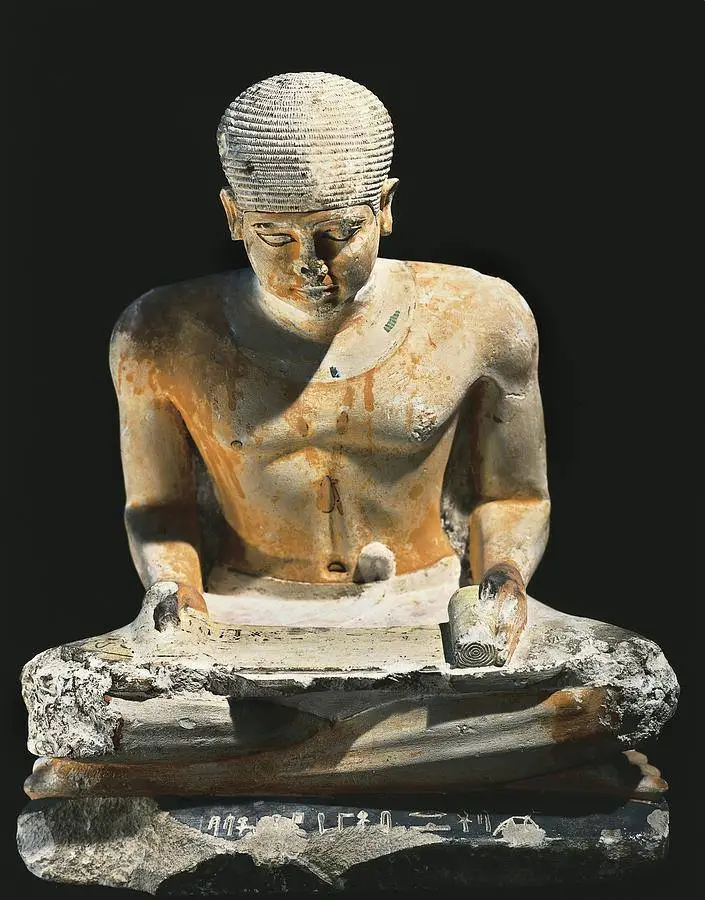
Nestled within the annals of ancient Egyptian artistry and craftsmanship is the remarkable statue of Ptahshepses, immortalized in his role as a scribe. Crafted with meticulous detail and profound symbolism, this statue offers a poignant snapshot of a bygone era—a testament to the cultural and intellectual vibrancy of Ancient Egypt.
Ptahshepses, depicted in the statue, assumes the classic posture of a “reading scribe.” Seated gracefully on the ground with his legs crossed, he embodies the epitome of scholarly dedication and intellectual pursuit. His attention is riveted on the partly unrolled papyrus that rests upon his knees, the delicate fibers of the ancient scroll bearing testament to the wisdom and knowledge encapsulated within.
The statue captures a moment frozen in time, as Ptahshepses gently inclines his head towards the papyrus, his eyes tracing the hieroglyphs and symbols that adorn its surface. The act of reading, revered in ancient Egyptian society as a sacred duty entrusted to scribes, is depicted with reverence and solemnity. It underscores the pivotal role played by these learned individuals in preserving and disseminating knowledge across generations.
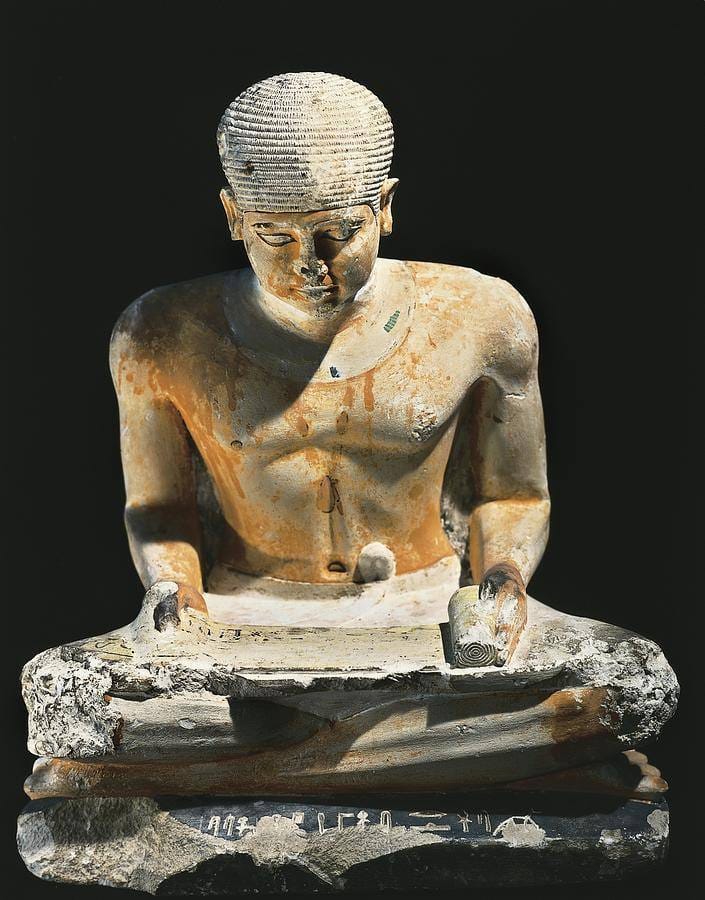
Adorning Ptahshepses’ neck is a heart-shaped amulet, a potent symbol of protection and spiritual devotion in ancient Egyptian belief. Suspended from the amulet is a counterpoise, meticulously crafted to ensure balance and harmony—a reflection of the Egyptians’ profound connection with the cosmic order and the afterlife.
Beyond its artistic beauty, the statue of Ptahshepses serves as a window into the social and cultural milieu of ancient Egypt. Scribes like Ptahshepses were not merely transcribers of texts but custodians of wisdom, entrusted with the sacred task of recording history, administering justice through written law, and preserving religious rituals and ceremonies.
The craftsmanship of the statue reflects the mastery of Egyptian artisans, who imbued their creations with spiritual significance and symbolic depth. Every detail, from Ptahshepses’ serene expression to the intricate hieroglyphs adorning the papyrus, speaks volumes about the reverence accorded to knowledge and the meticulousness of ancient Egyptian artistry.
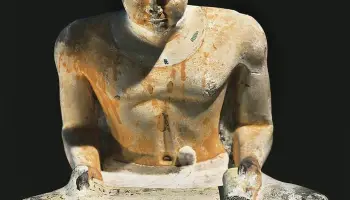
Ptahshepses’ portrayal as a scribe transcends mere representation; it embodies the essence of a civilization that valued intellect, scholarship, and cultural heritage. His legacy endures through the ages, a testament to the enduring quest for enlightenment and the timeless pursuit of understanding the mysteries of existence.
In conclusion, the statue of Ptahshepses as a scribe stands as a testament to the ingenuity and spiritual depth of ancient Egyptian civilization. It invites us to contemplate the role of scribes in shaping history and preserving knowledge, while also celebrating the artistic brilliance of a culture that continues to captivate and inspire the world.



